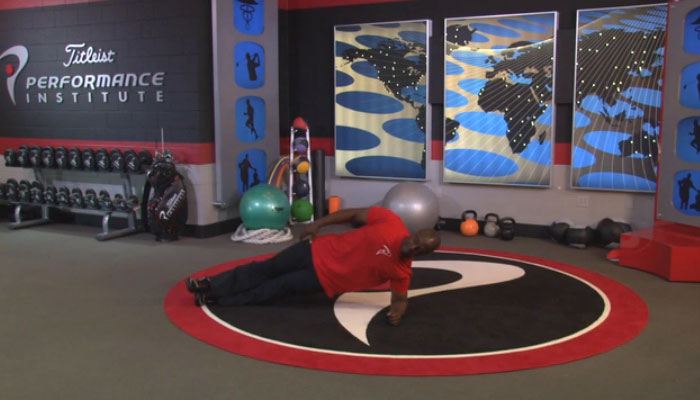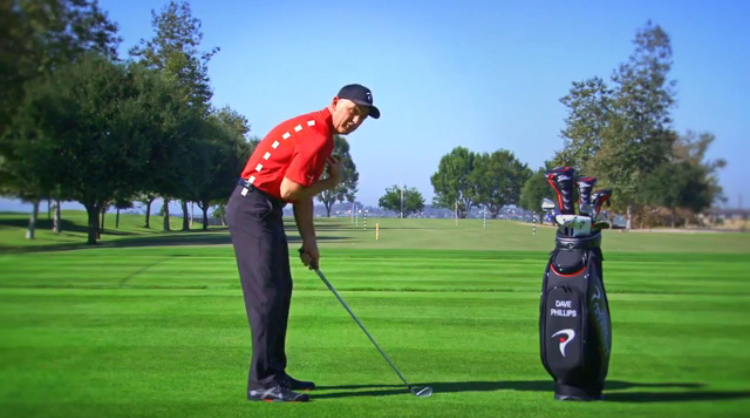IMPROVE MY GAME
Articles
Is Your Golf Swing Putting Your Shoulder At Risk?
Thu Jul 9, 2015 by Bobby Dattero
This post has been republished with permission from BobbyDattero.com.

The golf swing is one of the most demanding and complex movements in sports. An efficient swing requires a highly-coordinated mobilization and stabilizing of body segments. While some incorrectly associate golf as an unathletic activity, the golf swing is actually an incredibly ballistic movement. If not trained correctly, golfers can be at a serious risk of injury
It's been said that the body will always seek the path of least resistance in movement. While this benefits our adaptability, it doesn't do us favors with regards to injury risk and efficiency.
The golf swing is a good example here. When a golfer does not have great movement patterns, but asks his/her body to get into severe ranges of motion they may compensate by seeking excess ROM in certain areas, thereby increasing the risk of injury.
The shoulders are a particularly vulnerable area in the golf swing. A 2006 review of literature by McHardy, Pollard and Luo found that the shoulder accounts for between 8% and 18% of all golf-related injuries. While shoulder pain is not nearly as common as lower back pain, research suggests that the shoulder is the third most oft-injured part of the body (behind the lower back and wrist).
To get into the backswing we must have good thoracic spine mobility away from the ball and internal rotation on the back hip. Coming through the ball, the emphasis reverses.
Those that have poor thoracic spine mobility or hip internal rotation are going to compensate to get into their back swing. This usually means that the rotation comes from the low back or the shoulder, two areas not meant to be the axis of rotation.
The shoulder, especially, takes the brunt of the force when someone tries to have a long backswing and basically rips their arm across their body. These people are just asking for a rotator cuff or labral tear.
Testing for Movement
When looking at risk for a shoulder injury, there are 3 solid tests to look at.
The first is looking at the golfer’s posture. C posture, an excessive curvature of the back (pictured below), makes it difficult to rotate the torso and more likely to move at the shoulder.
There should be a relatively straight line from the hip to shoulder when setting up to hit a golf ball.
Second, we look for the ability of the torso to rotate, independently of the hips, knees and ankles. The Seated Trunk Rotation test allows us to see how well the thoracic spine rotates. When we sit down on a chair, with the feet and knees together, we should be able to get 45 degrees of trunk rotation.
Seated Trunk Rotation Test:
When a golfer lacks thoracic spine rotation, they may try to compensate by straining the shoulder to increase the length of the backswing. This can make them susceptible to injury.
A third test that we use looks at the stability of the shoulder. The Standing 90/90 Test looks at external rotation of the arms. We start by standing upright, bringing the arm out parallel to the ground, bending at the elbow, and turning the hand back. We then repeat this from a mid-iron golf stance.
90-90 Test:
The golfer should be able to get past their spine angle with the external rotation. If the test gets worse in the mid-iron posture, then we can determine that more shoulder stability work is needed.
Training to Protect the Shoulders
The goals of a program designed to work on reducing the risk of injury in the shoulders needs to work on:
- Thoracic Spine Rotation
- Shoulder Stability
- Hip Rotation
As I have mentioned before, if the torso and hips cannot move then the movement is going to come from somewhere. Often, the shoulder is one site of this movement.
We should be able to rotate through the upper back to get into the backswing. If not, then the backswing will have to get shorter or the risk of injury goes up.
Two exercises I like for improve T spine mobility are:
Quadruped Reachbacks with ER
Open Books
Improving shoulder stability basically means training the rotator cuff to control the movement of the shoulder blades. People with poor posture or a lack of balance in their programming often lose stability in this area.
We can train to get it back with external rotation variations and yoga pushups.
Hip rotation is critical in golf. TPI and Mike Boyle posted a great article last month about improving rotation from the hips and not the lower back. Some people have truly immobile hips and others lack lateral core stability, causing their hips to seem immobile.
If your hips have adequate mobility, but lack stability, it's a much easier fix. Before the next time you go out to swing a golf club, try this. Do a couple of side planks on each side and hold for about 8 seconds. Then get up and swing. You should feel looser and better prepared to rotate into the back swing.

It's not such a quick fix if your hips have the requisite stability, but lack mobility. This is one of many examples where a screening with a TPI Certified expert can tell you where your deficiencies are.
Obviously, there are a number of factors that can cause pain in any part of the body. The shoulder is no different. As with many golf-related injuries, the site of the pain is not always the issue. Hopefully this article gives you some things to improve BEFORE you experience any pain or discomfort in your shoulder.

Bobby Dattero Bobby Dattero graduated from Bridgewater State University with Master’s Degree in Strength and Conditioning. He is also a TPI Certified expert and Certified Strength and Conditioning Specialist (CSCS). Bobby is currently working with adults and athletes in accomplishing their sports performance and fitness goals at Evolution Sports Performance. He is also the Head Strength and Conditioning Coach for Stonehill College Men’s Hockey.
